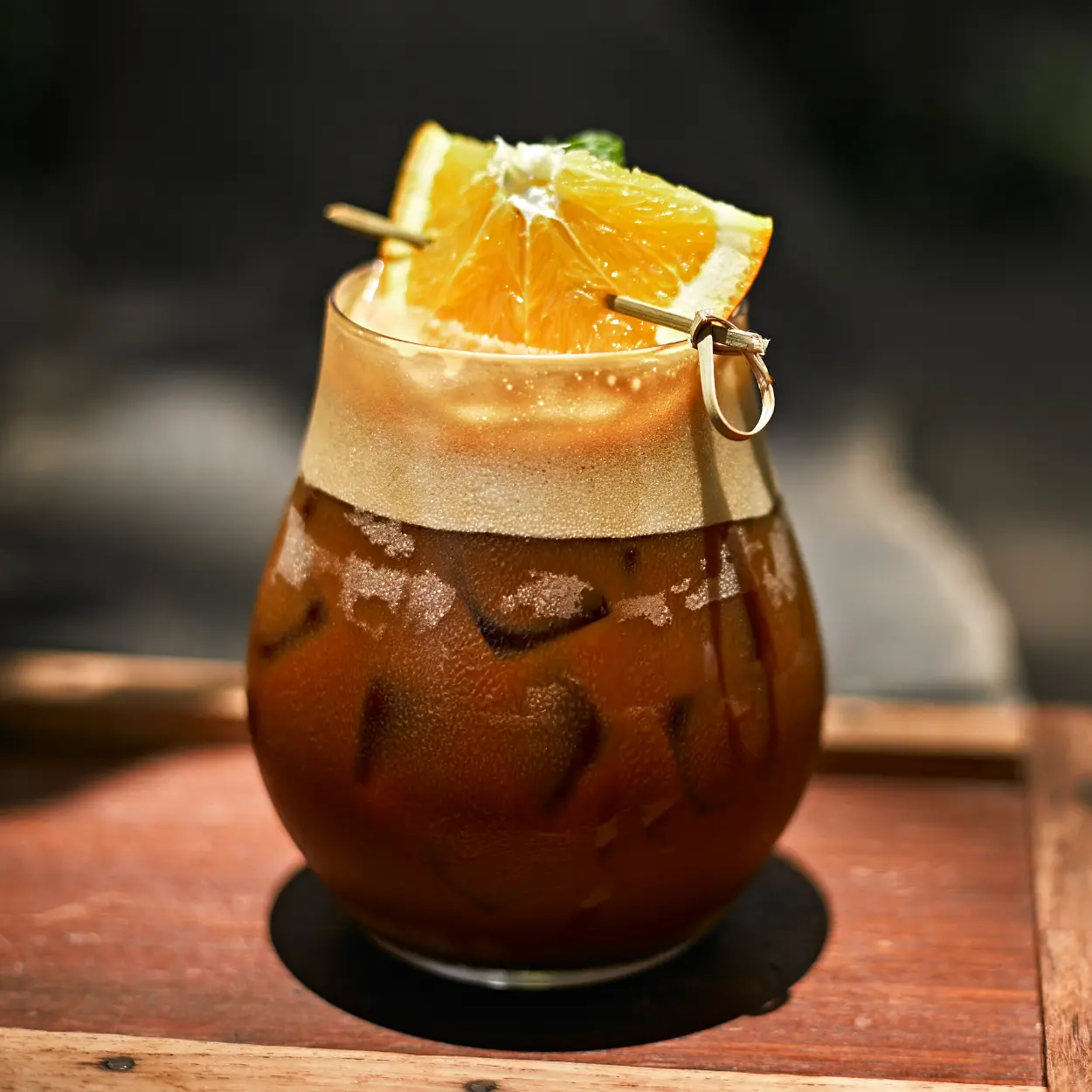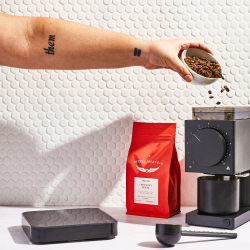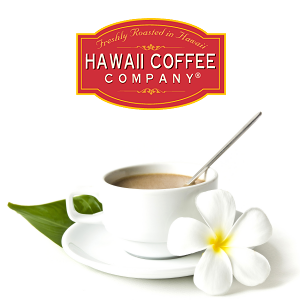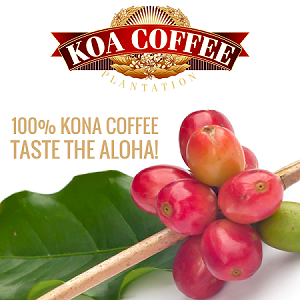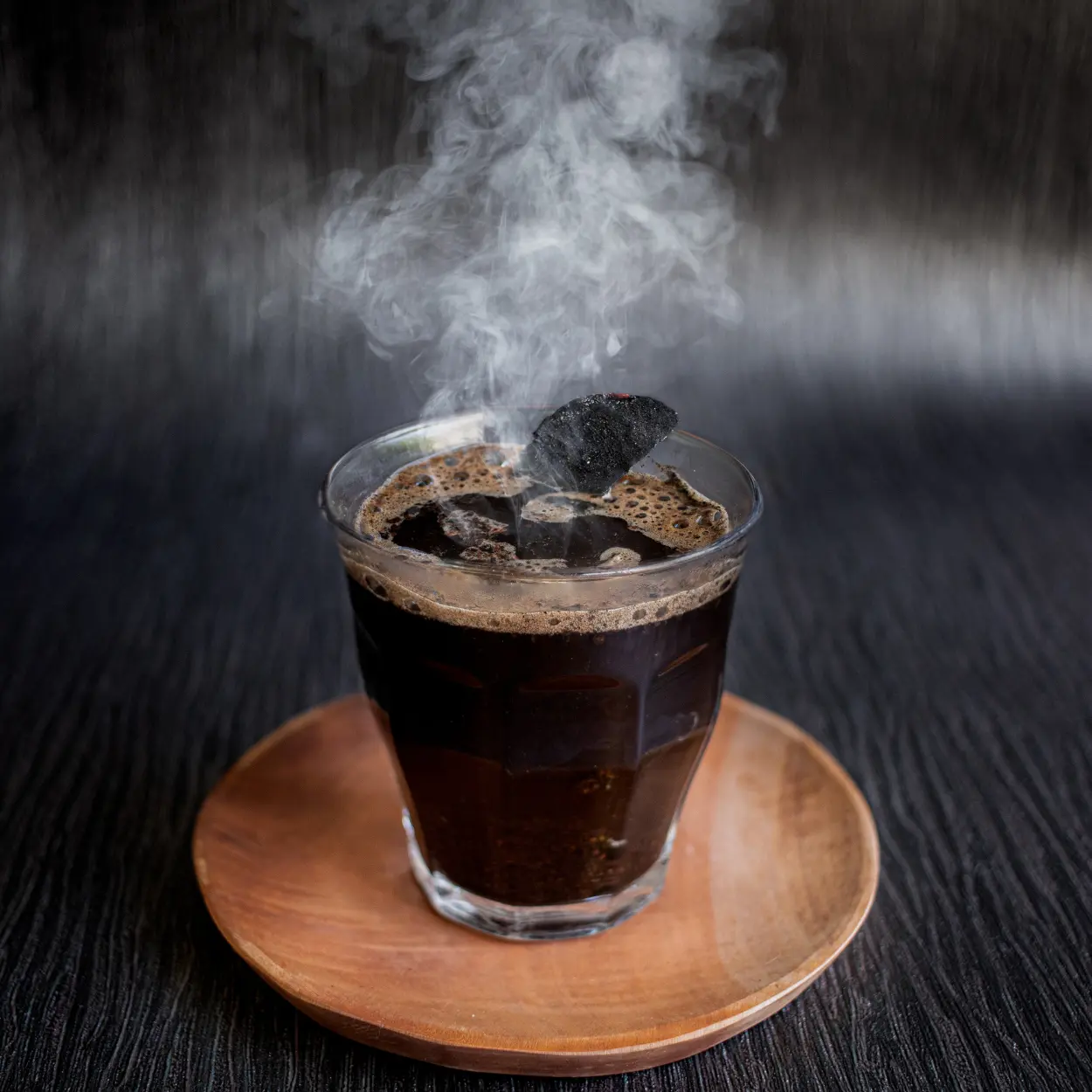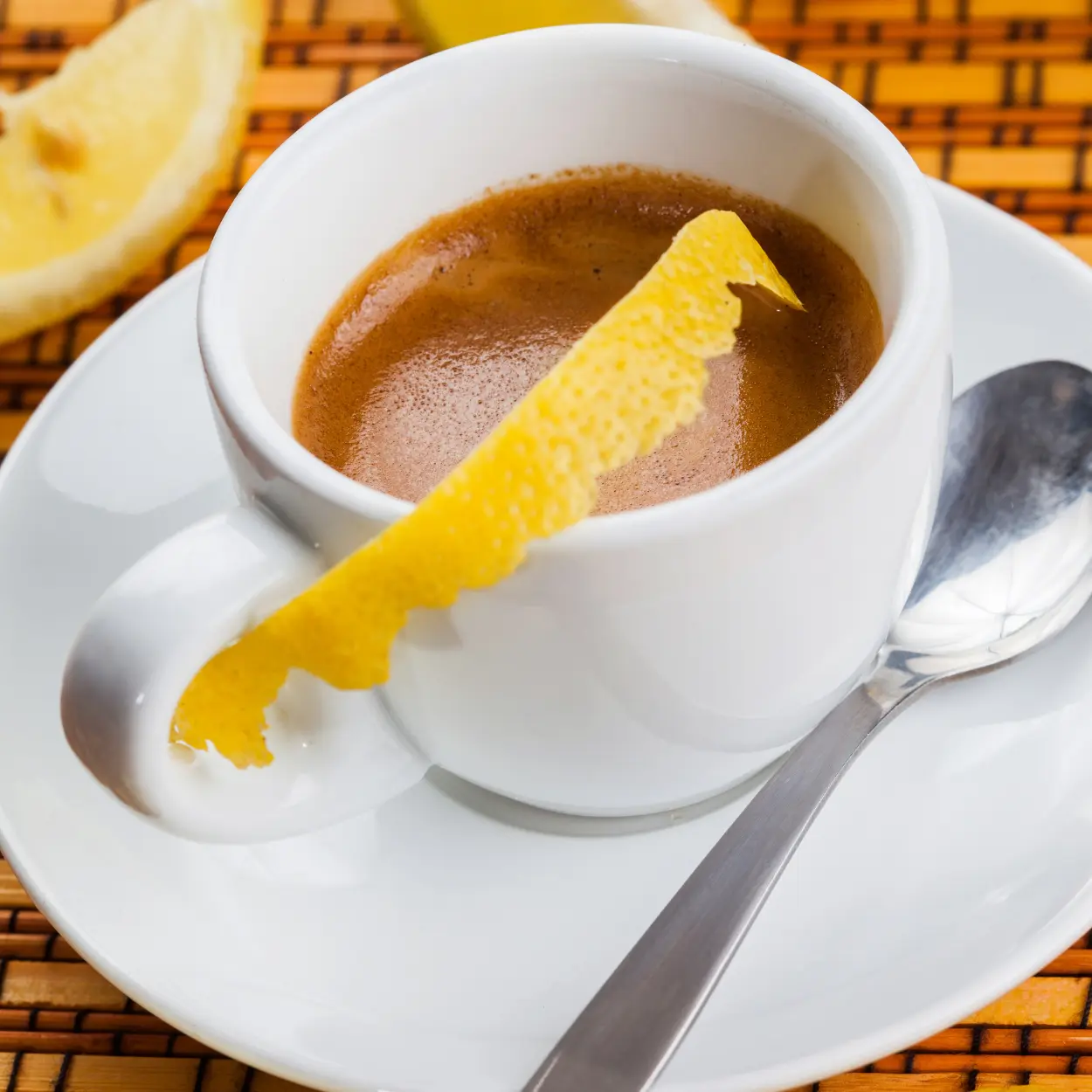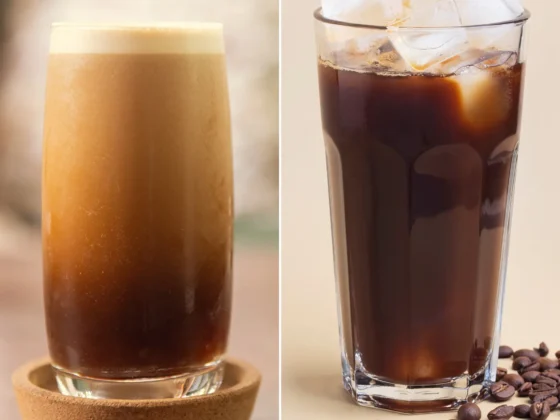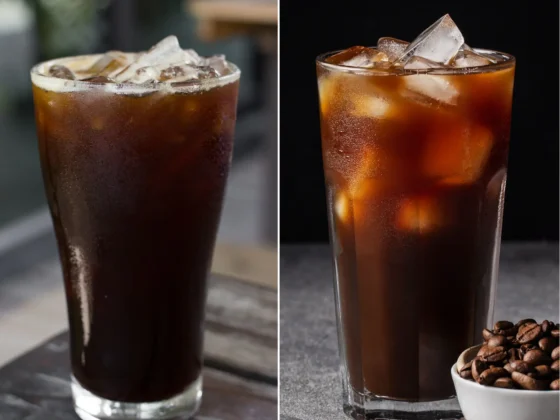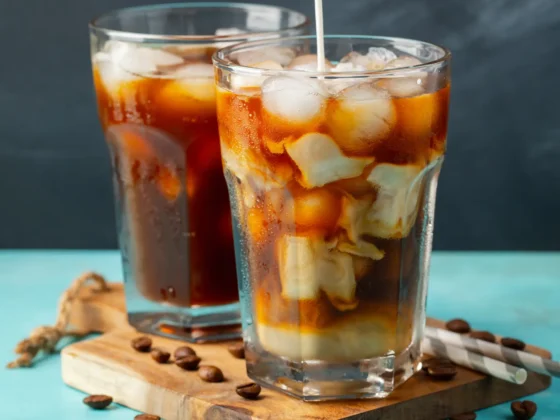If you’ve ever wondered what is an espresso tonic, you’re in for a treat. This intriguing drink is a delectable fusion of robust espresso and effervescent tonic water, creating a beverage that’s as refreshing as it is rich in flavor. The blend of espresso and tonic water has its origins in Sweden during the early 2000s, purportedly crafted by a barista at Koppi Roasters in the year 2007. Its popularity surged across the Scandinavian region and gradually spread to international destinations via barista competitions, including events like the World Barista Championship.
Since then, it has been gaining traction in barista competitions, eventually making its mark on coffee-loving cities like San Francisco, New York, and New Orleans. Even mainstream chains are catching onto the trend, with versions like the Caribou Espresso Tonic appearing on menus. This article delves into the art of marrying espresso and tonic water, offering insights into selecting the right ingredients, ratios, and additional flavorings to craft your perfect cup.
Espresso Tonic: Key Takeaway
- Origins and Evolution: This refreshing concoction is an effervescent blend of coffee and tonic, and was born in Sweden in 2007. It rapidly gained popularity, making its way from local cafes to international coffee scenes, largely due to its exposure to barista competitions.
- Flavor and Versatility: The drink offers a unique balance between the bitterness of tonic and the depth of espresso, creating a rich yet mildly sweet taste. Its adaptable nature allows for various flavors and twists, such as orange espresso tonic or cherry peach espresso tonic.
- Health Insights: Beyond its taste, this beverage provides an interesting health profile. It contains antioxidants, with considerations given to its caffeine content and caloric value, making it a beverage that can fit into a balanced lifestyle.
- Global Spread and Adaptation: From its roots in Sweden, this coffee drink has taken the world by storm, being adapted and modified by different cultures across Asia, Europe, and the Americas, showcasing its universal appeal.
- A Blend of Tradition and Innovation: At its core, understanding how to make an espresso tonic and what it means, appreciating the delicate balance between traditional coffee culture and the continuous pursuit of innovation in the world of beverages.
What is an Espresso Tonic?
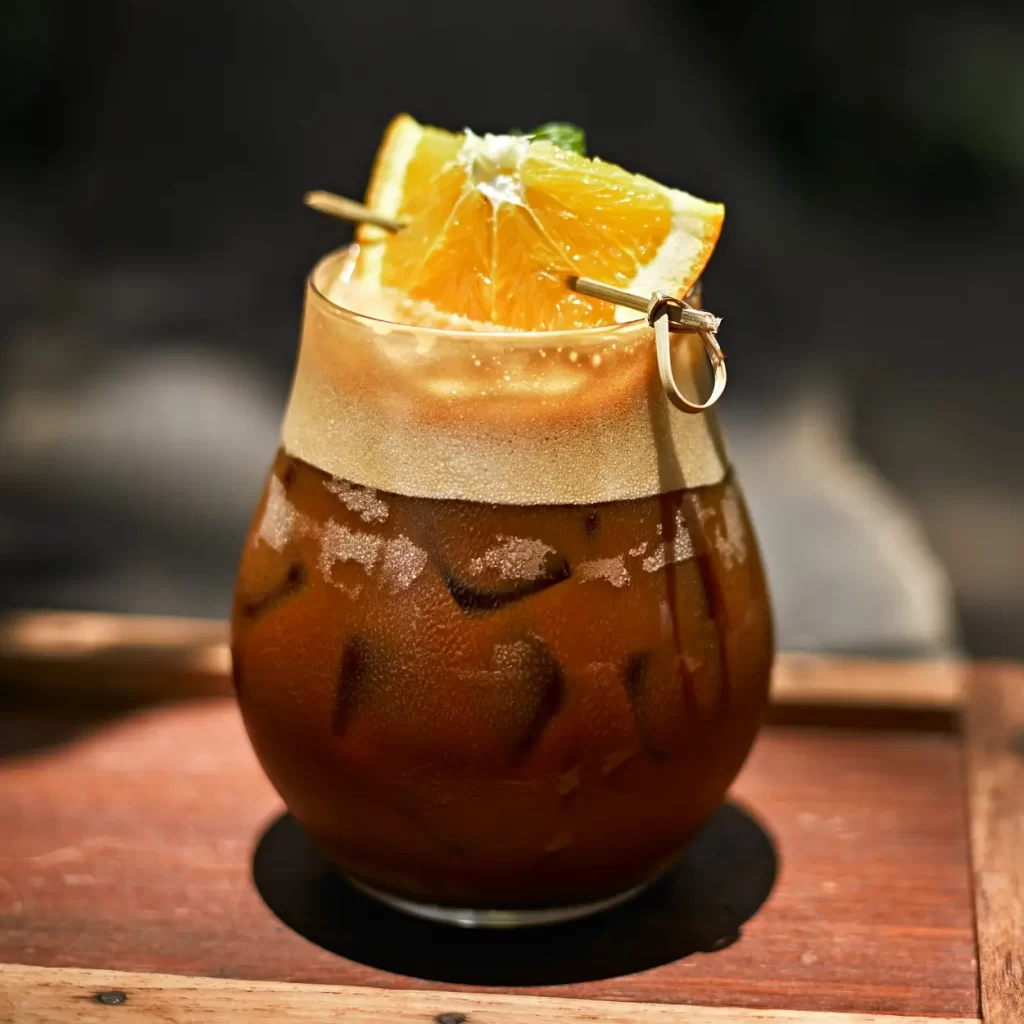
An Espresso Tonic is more than just a trendy name; it’s a harmonious blend of caffeinated delight and sparkling refreshment. Originating in Helsingborg back in 2007, this tantalizing drink soon made a splash on the Scandinavian coffee scene. Since then, its appeal has exploded, making its way into coffee-savvy metropolises such as San Francisco, New York, and New Orleans through competitive barista events.
The classic recipe combines three key ingredients: single-origin espresso, bubbly tonic water, and a touch of simple syrup. One of the most enchanting aspects of this drink is its adaptability. Whether you’re looking to dial back the sweetness by skipping the syrup, or you wish to enhance the depth by adding a dash of citrus juice, this delightful coffee drink allows for endless customization.
How to Make Espresso Tonic: A Step-by-Step Guide

This delicacy is a delightful amalgamation of bitter and sweet, cold and hot, caffeinated and quenching. This unique drink has won the hearts of many coffee enthusiasts and cocktail aficionados alike. The key to perfecting this drink lies in the quality of its two main ingredients: espresso and tonic water. Here’s how to make an espresso tonic that lives up to its full potential.
Selecting Your Beans: Espresso Choices That Shine

Choosing the right coffee beans is the first crucial step in making an exceptional cup of this beverage. The type of bean you select will dictate the flavor profile, affecting everything from the aroma to the aftertaste. Here are some factors to consider:
- Single-Origin vs. Blend: Single-origin beans offer unique and distinct flavors, whereas blends are designed to offer a balanced flavor profile. For this concoction, single-origin beans that have fruity or floral notes work exceptionally well.
- Roast Level: A medium to dark roast is generally recommended for espresso. These roasts produce a more robust and intense flavor that can stand up to the tonic water.
- Freshness: Always choose beans that are freshly roasted. The closer the roast date to your brewing day, the better. Fresh beans ensure that the espresso’s flavors are at their peak.
Remember, the quality of your beans will directly influence the end product. Investing in high-quality, freshly roasted beans is a surefire way to elevate your beverage to the next level.
Tonic Water: The Bubbly Backbone of the Drink
The tonic water you choose serves as the bubbly backbone of the drink, adding effervescence, sweetness, and a slight bitterness. This effervescent component contrasts beautifully with the deep flavors of the espresso. Here’s what to look out for:
- Sweetness: Different brands have varying levels of sweetness. Opt for a tonic water that aligns with your personal preference. Some people prefer a less sweet tonic to allow the espresso’s flavors to shine.
- Bitterness: Quality tonic water contains quinine, which adds a bitter undertone. This bitter component complements the espresso, creating a well-balanced drink. (1)
- Carbonation: A higher level of carbonation adds a crisp, refreshing element to the drink. Make sure to choose a tonic water that is adequately carbonated to make your beverage truly sparkle.
Just as with the espresso beans, don’t skimp on the quality of your tonic water. A premium tonic can make all the difference in achieving the perfect harmony of flavors.
No products found.
The Ratio Game: Getting Your Mix Just Right
The ratio of espresso to tonic water is another key factor in making an exquisite cup of this coffee drink. Too much espresso can overpower the tonic water, while too little will make the coffee notes barely noticeable. Here are some guidelines:
- Standard Ratio: A common ratio is 1:3, meaning one part espresso to three parts tonic water. This offers a balanced blend of both components, producing a drink that’s neither too bitter nor too diluted.
- Experimentation: Don’t be afraid to tweak the ratio according to your taste. Some people prefer a stronger coffee flavor and go for a 1:2 ratio, while others who love the effervescence may opt for a 1:4 ratio.
- Ice: Don’t forget to account for ice, which will slightly dilute the drink as it melts. Use large ice cubes to slow down the dilution process.
Getting the ratio just right may require some experimentation, but it’s well worth the effort when you sip that perfectly balanced cup of joe.
By being meticulous in selecting your beans and tonic water, and by perfecting the ratio of the two, you can master the art of making a sublime cup of this beverage. Cheers to your next caffeinated adventure!
The Flavor Profile: Understanding the Palate of Espresso Tonic
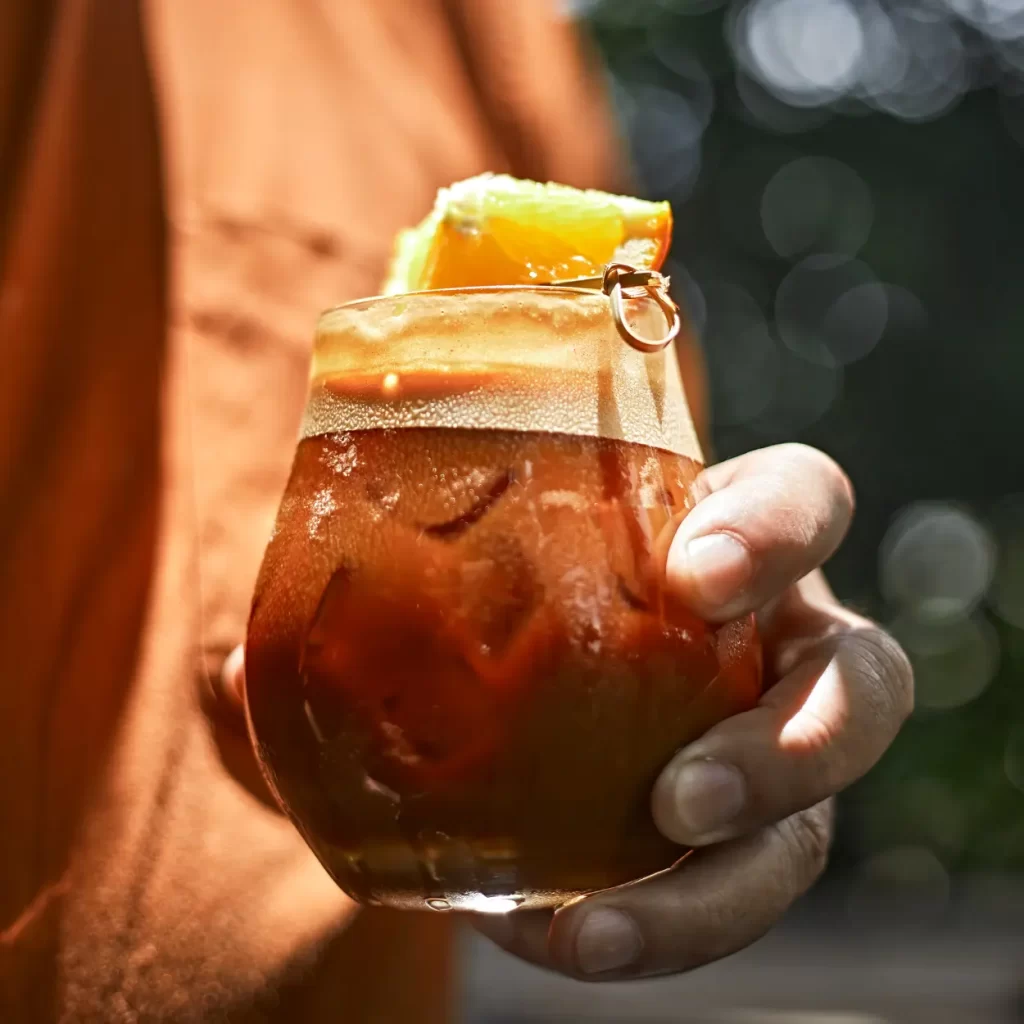
This concoction is a symphony of contrasting yet complementary flavors, offering a unique palate experience that’s unlike any other coffee beverage. Understanding the nuanced flavor profile of this effervescent drink is key to enjoying it to the fullest. From the sweet and bitter notes contributed by tonic water to the rich, aromatic depth of espresso, each component plays a significant role. Additionally, the possibilities for variations and accompaniments are practically endless, allowing for a wide range of taste experiences.
The Bitterness and Sweetness Dance: Tonic’s Role
As previously discussed, tonic water brings a dual role to this beverage equation: it adds both sweetness and bitterness. Its effervescence provides a refreshing backdrop, while the quinine content lends a touch of bitterness. This bitter note balances out the richness of the espresso and can cut through its intense flavor.
- Quinine: The quinine in tonic water is responsible for the drink’s signature bitterness, harmonizing with espresso’s richness to create a well-rounded flavor experience.
- Sweetness: Tonic water also contains sweeteners that complement the espresso. The sweetness adds complexity and can help to soften the edges of a more robust or acidic espresso.
When selecting your tonic water, consider the level of sweetness and bitterness that suits your palate. Finding the right tonic can truly elevate the entire drinking experience.
The Depth of Espresso: What It Brings to the Table

Espresso is the soul of the drink, imparting deep, complex flavors that take the tonic water to new heights. The concentrated coffee flavors provide a robust foundation that can stand up to the effervescence and sweetness of the tonic.
- Intensity: Espresso’s concentrated nature means that its flavors are intense and pronounced, offering notes of chocolate, fruit, or even spice depending on the bean variety.
- Texture: Espresso adds a layer of texture to the drink, contributing to its fuller mouthfeel. This contrasts beautifully with the crispness of the tonic water.
Espresso’s depth allows the drink to be more than just a refreshing beverage; it turns it into a nuanced, flavor-rich experience that can be savored and dissected.
Accompaniments & Variations: Experimenting with Flavors
What makes this delectable beverage so exciting is its adaptability. You can make subtle changes or grand experiments to suit your taste preferences. For instance, an Orange Espresso Tonic is a popular variation that adds a citrusy twist to the classic recipe.
- Citrus Notes: Adding a splash of orange or lemon juice brings in an extra layer of complexity, introducing acidity and fruity tones.
- Sweeteners: You can switch out simple syrup for other liquid sweeteners like honey or agave nectar to subtly alter the sweetness profile.
- Herbal Garnishes: Consider adding mint leaves or a sprig of rosemary to add an aromatic element to your drink.
From citrus additions to herbal garnishes, the options for customization are endless, allowing every cup of this drink to be a unique expression of your flavor preferences.
By understanding each component’s contribution to the overall flavor profile, you can truly appreciate the depth and complexity of this coffee drink. The interplay between bitterness and sweetness, the rich nuances of espresso, and the endless possibilities for personalization make this drink a captivating choice for any palate.
Espresso Tonic Around the World: Unique Takes and Variations
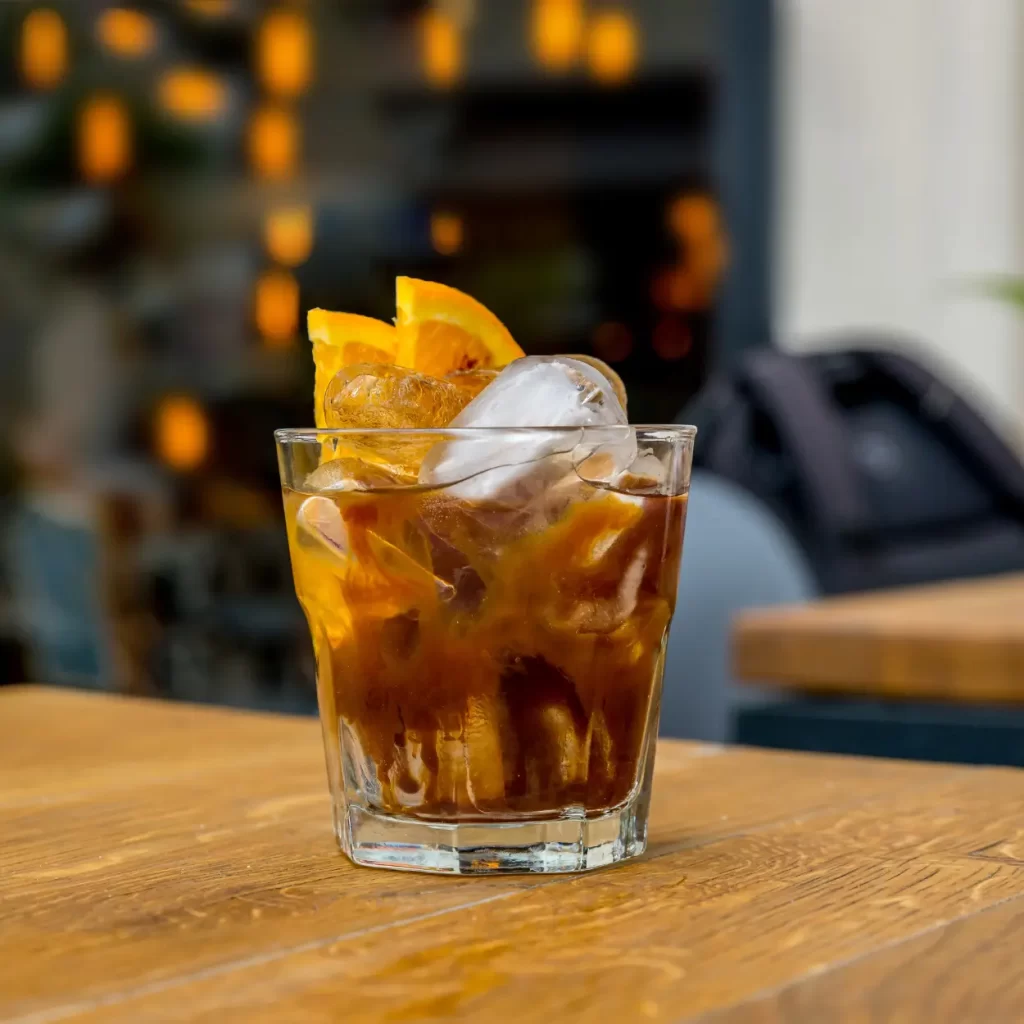
The Espresso Tonic is a drink that has resonated with coffee enthusiasts and casual drinkers alike, not just in its Swedish birthplace but across the globe. Its innate adaptability allows it to meld seamlessly with local flavors and culinary philosophies. From the rich tapestry of Asian beverage culture to European elegance and the modern twists seen in the Americas, this versatile drink takes on diverse identities as it travels. Below, we explore how different regions have embraced and modified this concoction to suit their unique tastes.
Asian Adaptations: How the East Embraced the Mix
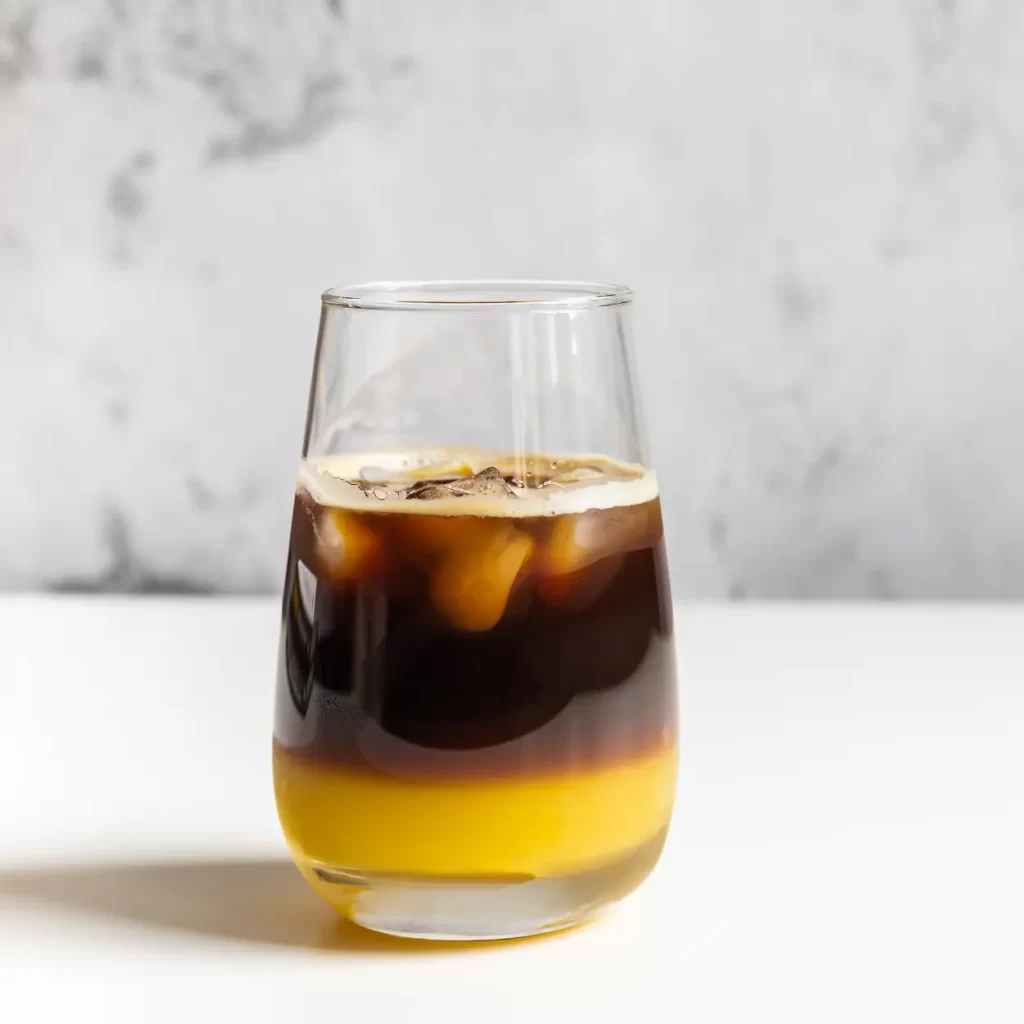
In Asia, this drink has been imbued with local flavors and ingredients that reflect the continent’s rich culinary heritage. With an emphasis on herbal and fruity infusions, this beverage in Asia is often a more complex affair.
- Tea Infusions: In countries like Japan and China, where tea culture is prominent, you might find tonic water infused with green tea or jasmine for a unique layer of complexity.
- Fruit Additions: Mango and lychee are popular fruit choices that provide a tropical twist to the classic beverage.
- Unique Sweeteners: Asian adaptations often make use of local sweeteners like palm sugar or yuzu syrup, enhancing the flavor profile in exciting ways.
Asian variations of this drink showcase the depth and complexity that regional ingredients can bring to this ever-evolving beverage.
European Elegance: Continental Twists on the Classic
In Europe, this beverage takes on a more elegant and understated character. European cafes often infuse their renditions with artisanal ingredients and a touch of sophistication.
- Craft Tonics: Specialized tonic waters with herbal infusions, such as lavender or elderflower, are common in European variations.
- Fruit Nuances: Orange Espresso Tonic is a favored twist in many Mediterranean countries, echoing their penchant for citrus flavors.
- Alcoholic Variants: In some places, you might even find an Espresso Tonic cocktail, integrating ingredients like gin or Amaro for an adult version of the drink.
European versions often aim to elevate this delicacy to the status of a gourmet experience, with nuanced flavors and high-quality ingredients.
Americas: A Modern Take on Tradition

In the Americas, particularly in coffee-forward cities like San Francisco and New York, this concoction is often seen as a modern, cutting-edge beverage that resonates with a younger audience.
- Syrup Flavors: The range of syrups used can be extensive, from traditional simple syrup to more experimental flavors like cherry or maple.
- Fruit Combinations: Cherry Peach Espresso Tonic is a trendy variant that combines fruity flavors with the robustness of espresso.
- Artisanal Coffee: Single-origin and ethically sourced beans are often the focus, allowing the espresso to shine even in a mixed beverage.
In the Americas, this delightful beverage often becomes a canvas for innovation, merging tradition with modernity in a flavor-packed glass.
This drink’s adaptability is its greatest strength, allowing it to adopt unique identities across different continents. Whether you’re savoring a fruit-infused version in Asia, enjoying a refined European twist, or exploring modern combinations in the Americas, this versatile drink promises a rich tapestry of flavors and experiences.
Health and Nutritional Insights: Espresso Tonic Under the Microscope

When it comes to beverages, especially those that taste as good as an Espresso Tonic, health and nutrition may not be the first things on your mind. However, understanding the health implications of your drink can enhance your overall enjoyment and allow you to make informed choices. In this section, we will delve into the caffeine content, caloric breakdown, and lesser-known health benefits of this coffee drink.
Caffeine Content: What to Expect in a Glass
One of the first things to consider when enjoying this concoction is its caffeine content. Espresso is a concentrated form of coffee and, as such, comes with a higher level of caffeine per ounce compared to regular coffee.
- Espresso Shot: A typical shot of espresso contains around 63 milligrams of caffeine. This can vary depending on the type of bean and the brewing process.
- Tonic Water: Tonic water usually doesn’t contain caffeine, so the majority of the caffeine in your drink will come from the espresso itself.
Understanding the caffeine content can help you decide whether this drink is appropriate for you at any given time, especially if you are sensitive to caffeine or monitoring your intake.
Caloric Breakdown: The Diet-Friendly Aspect of Espresso Tonic
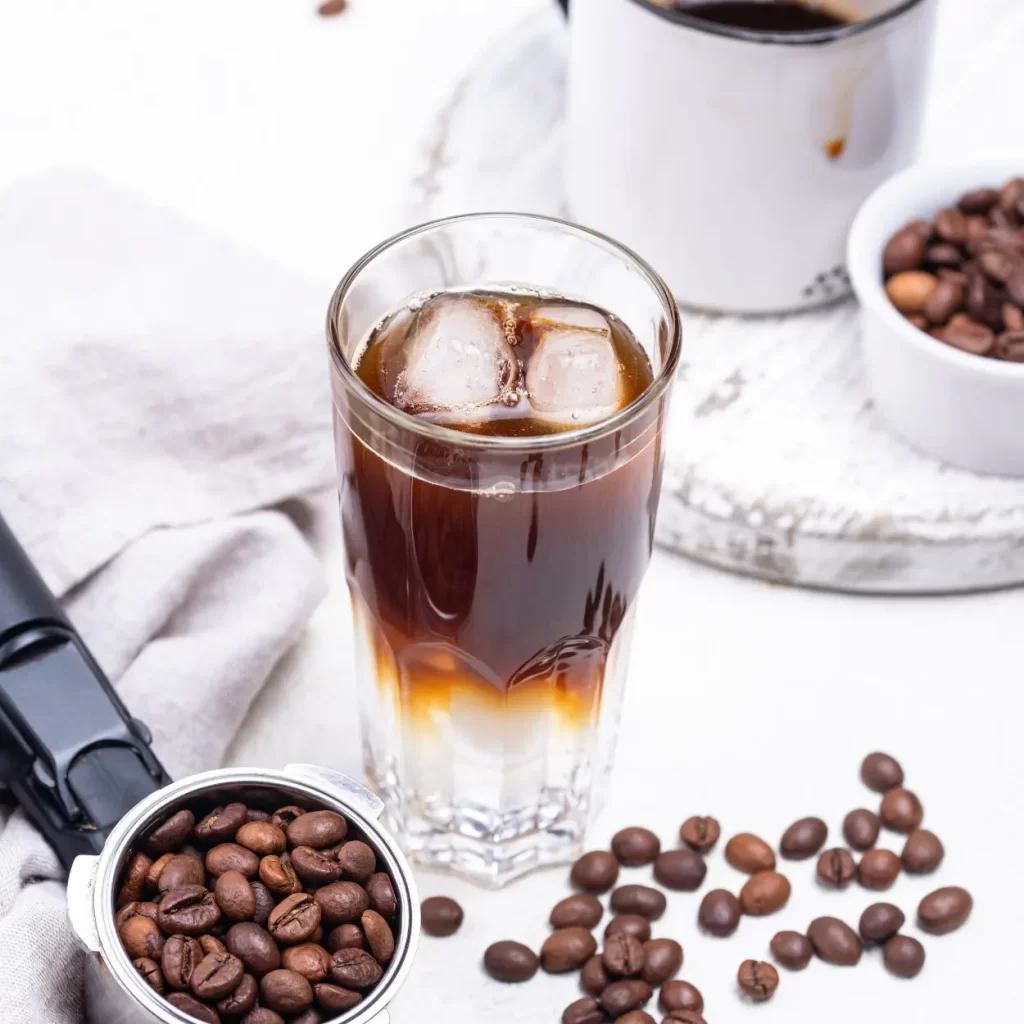
When it comes to calories, this coffee drink can be surprisingly diet-friendly, particularly if you are mindful of the ingredients you choose.
- Espresso: The espresso shot itself is very low in calories, generally around 5 calories per ounce.
- Tonic Water: Standard tonic water can contain about 83-90 calories in an 8-ounce serving, mainly from the added sugars. However, there are diet or zero-calorie tonic waters available for a lighter option.
Being aware of the caloric breakdown allows you to customize your beverage to fit your dietary needs, whether you’re cutting back on calories or indulging a little.
Antioxidants and Health: The Lesser Known Benefits
Beyond caffeine and calories, there are some hidden health benefits to consider when enjoying this concoction.
- Antioxidants: Espresso is rich in antioxidants, such as chlorogenic acid, that are known to combat oxidative stress in the body.
- Quinine Benefits: Tonic water is occasionally employed by certain individuals to alleviate nocturnal leg cramps; however, scanty evidence exists to support the notion of its effectiveness in this regard. (2)
While an Espresso Tonic should not be considered a health drink, its individual components do offer some minor health benefits that can be a nice addition to its delightful taste.
In summary, understanding the health and nutritional aspects of this coffee drink can make your experience more enriching. Whether you’re monitoring your caffeine intake, counting calories, or simply curious about the benefits, this drink offers a balanced blend of flavor and nutritional facets.
History and Origin of Espresso Tonic
The Espresso Tonic is more than just a delicious and unique beverage; it carries a history that speaks to innovation, global influence, and the ever-evolving culture of coffee. Understanding the roots of this effervescent coffee drink adds depth to each sip, taking you on a historical journey from a Swedish coffee shop to bustling cafes across the globe.
Where It All Began: The Birthplace of Espresso Tonic
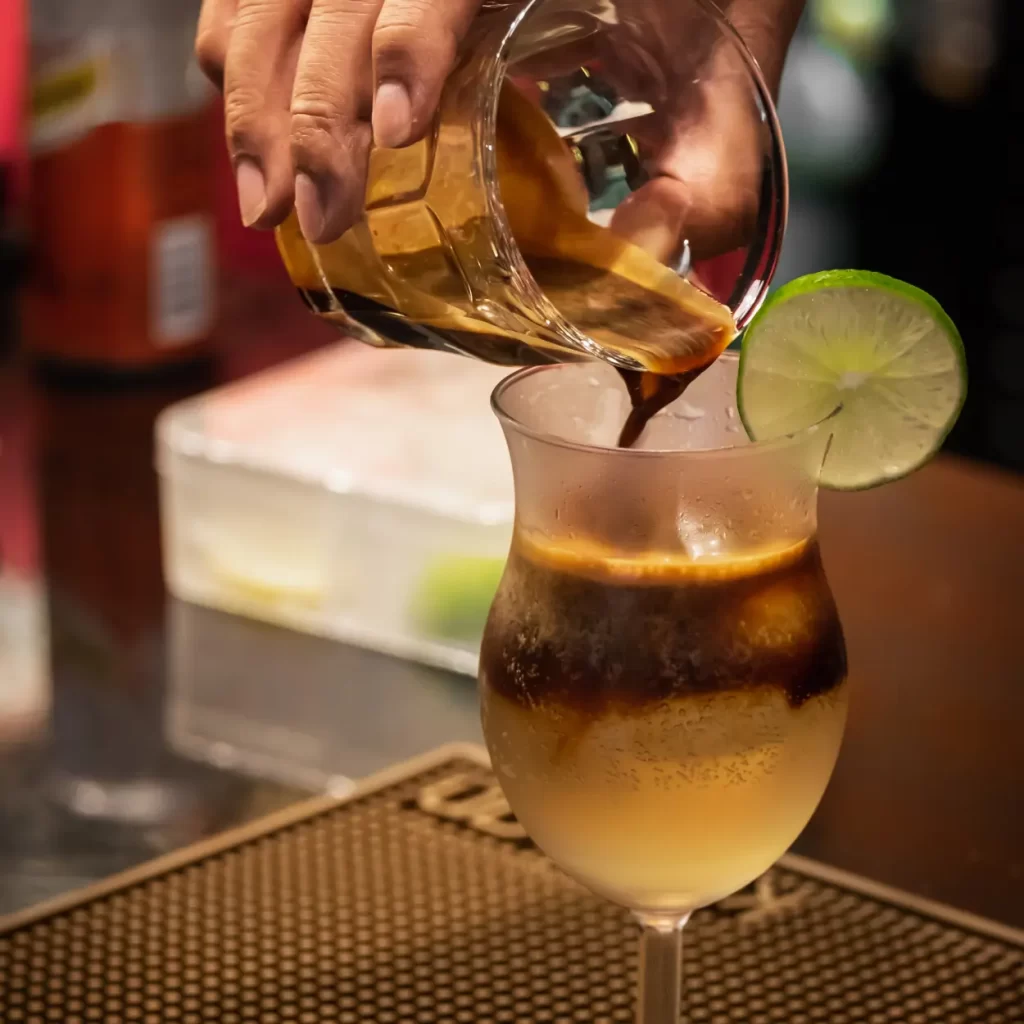
The birth of this delicacy can be credited to the coffee-centric atmosphere of Helsingborg, Sweden. This unique blend came to life in 2007, conceived by a barista at Koppi Roasters.
As stated by Anne Lunell, a co-founder, this delightful beverage came into existence following a staff gathering where surplus tonic, a small amount of syrup, and espresso remained. Upon the establishment’s inauguration, the concoction known as Kaffe & Tonic was integrated into the menu. Over the subsequent decade, K & T held its position as the most favored chilled refreshment served.
- Innovation Hub: Sweden has long been known for its pioneering role in the coffee scene, making it the ideal birthplace for such an inventive beverage.
- Koppi Roasters: The Swedish cafe not only popularized the drink but also acted as its launching pad, introducing it to a wider audience.
This beverage’s origin serves as a testament to the ingenuity that is often found in the world of coffee, particularly in regions willing to experiment and break the mold.
For more captivating insights into coffee innovation and culture, don’t miss our detailed article on the intriguing world of Fika Coffee.
The Evolution: From Curiosity to Coffee Trend
Initially a unique offering at Koppi Roasters, this concoction gradually gained traction, moving beyond the café’s walls and into the broader Helsingborg region. From there, it crossed the Atlantic, making its American debut through the avenue of barista competitions. By 2014, the drink was already popping up in specialty coffee shops in prominent U.S. cities like New York City, San Francisco, and New Orleans.
- Barista Competitions: These events served as a fertile ground for this delicacy to grow, offering a platform for unique and creative coffee beverages.
- U.S. Coffee Scene: American coffee shops were quick to adopt the trend, showcasing the beverage’s adaptability and widespread appeal.
This drink’s evolution from a café specialty to an international trend illustrates its capacity to captivate a diverse range of coffee enthusiasts.
The Global Spread: How Espresso Tonic Gained Worldwide Attention
Though the concept of blending tonic water and espresso gained some experimental attention in early 2015 barista competitions, it was really Koppi Roasters that catapulted this beverage to international stardom. The “signature drink” categories of these competitions often encouraged ingenuity, and the Espresso Tonic fit the bill perfectly.
- Signature Drinks: The global competitions emphasized creativity, providing this concoction with a platform to shine.
- Global Phenomenon: From its roots in Helsingborg, Sweden, the drink has now spread worldwide, enjoying variations and adaptations in different cultures.
This drink’s path to global acclaim shows how a simple yet inventive drink can capture the imaginations and taste buds of people around the world.
The history and origin of this delicacy are as complex and fascinating as the drink itself. Born from Swedish innovation and spread through global competitions and local cafes, it stands as a vibrant example of how creativity and tradition can meld to form something entirely new and universally appealing.
Conclusion
In the ever-expanding universe of coffee, this beverage stands as a celestial body of its own, offering a unique blend of flavors, textures, and history that captivates both casual drinkers and coffee connoisseurs alike. From its birth in the innovative coffee culture of Sweden to its meteoric rise across the globe, the journey of this effervescent brew has been nothing short of phenomenal.
The versatility of this coffee drink is truly a marvel, with its adaptability in terms of flavor profiles, from the dance of bitterness and sweetness to the rich depth that espresso brings. We’ve looked into how to make an espresso tonic, dissecting the various elements like the bean selection, tonic water, and ratios that make this beverage a masterpiece of balance. Whether you prefer an orange espresso tonic or a cherry peach espresso tonic or even wish to turn it into an espresso tonic cocktail, the possibilities for customization are endless.
Beyond the tongue-tingling taste, we delved into the lesser-known health aspects. While it might not be a superfood, this beverage offers a surprising array of minor health benefits, alongside important considerations like caffeine content and caloric intake.
But what really brings this drink full circle is its compelling story of creation and global proliferation. Understanding what is an espresso tonic involves more than just savoring its layers of flavor; it’s also appreciating the history and craftsmanship that have brought it from a single Swedish café to international fame.
So, the next time you enjoy this concoction, know that you’re partaking in a global phenomenon—a harmonious blend of coffee and tonic water that symbolizes the wonderful outcomes of culinary creativity, global connectedness, and an enduring love for quality coffee. Cheers!
FAQ
How does the caffeine content of Espresso Tonic compare to other coffee drinks?
The caffeine content is similar to that of a regular espresso shot, as the tonic water doesn't contain caffeine.
What are some popular variations of Espresso Tonic around the world?
Popular variations include the cherry peach espresso tonic, orange espresso tonic, and espresso tonic cocktails.
Can Espresso Tonic be made with alternative milks or sweeteners?
Yes, you can use alternative sweetening agents like agave or stevia, and while milk is generally not used, some people experiment with milk alternatives.
How did Espresso Tonic transition from a niche beverage to a mainstream trend?
It gained visibility and popularity through barista competitions and quickly spread to major coffee-focused cities worldwide.
